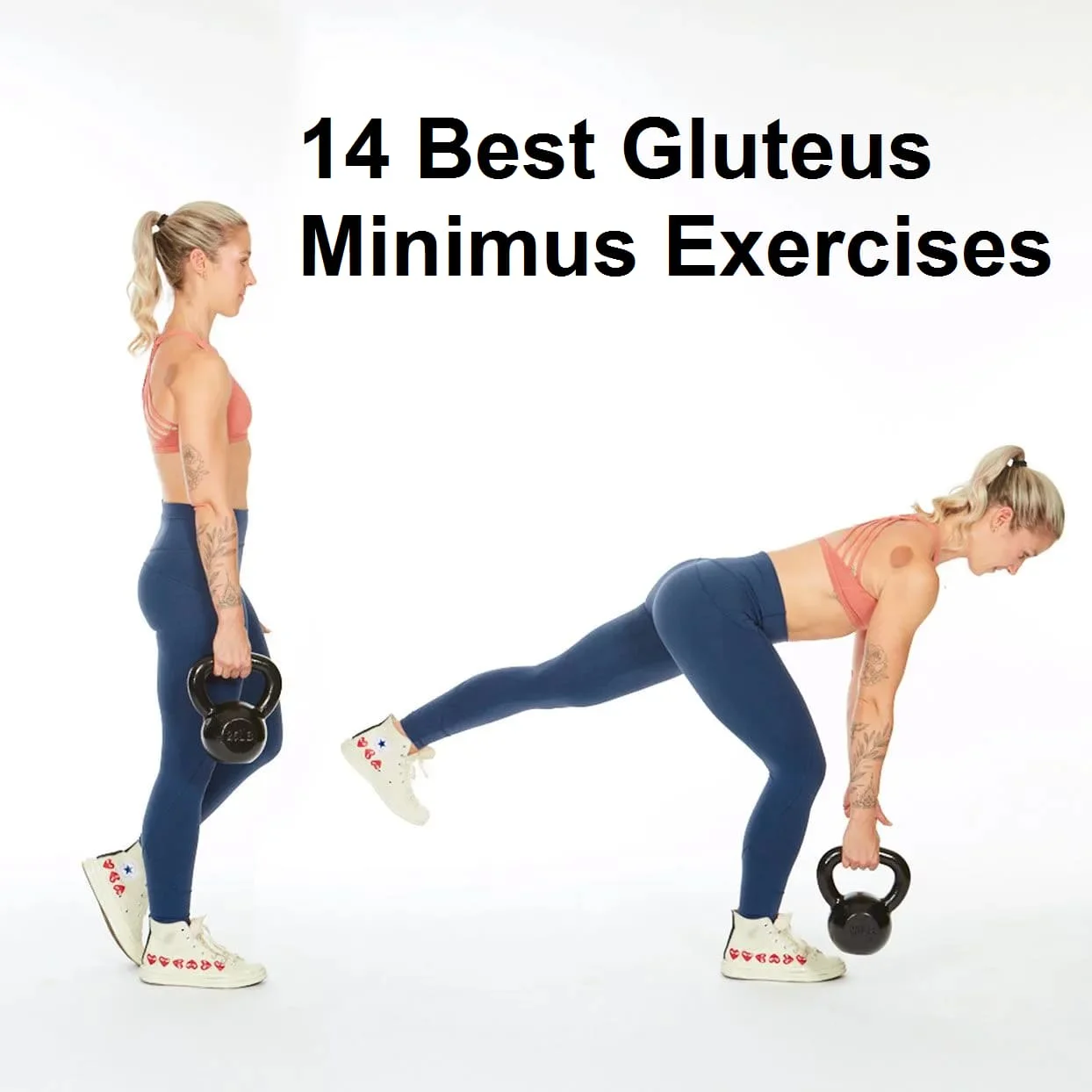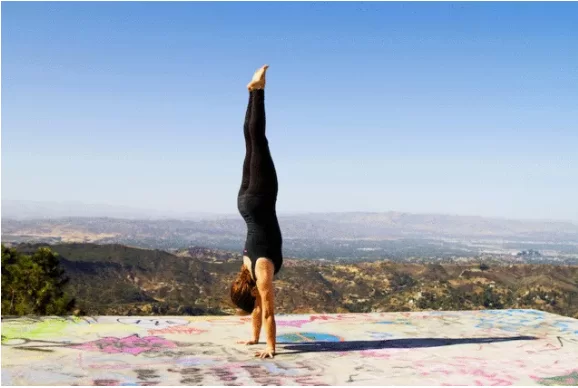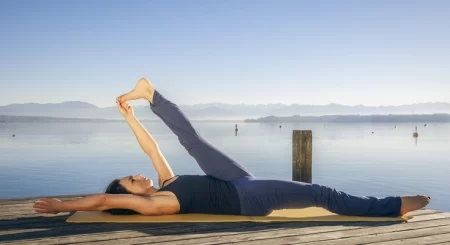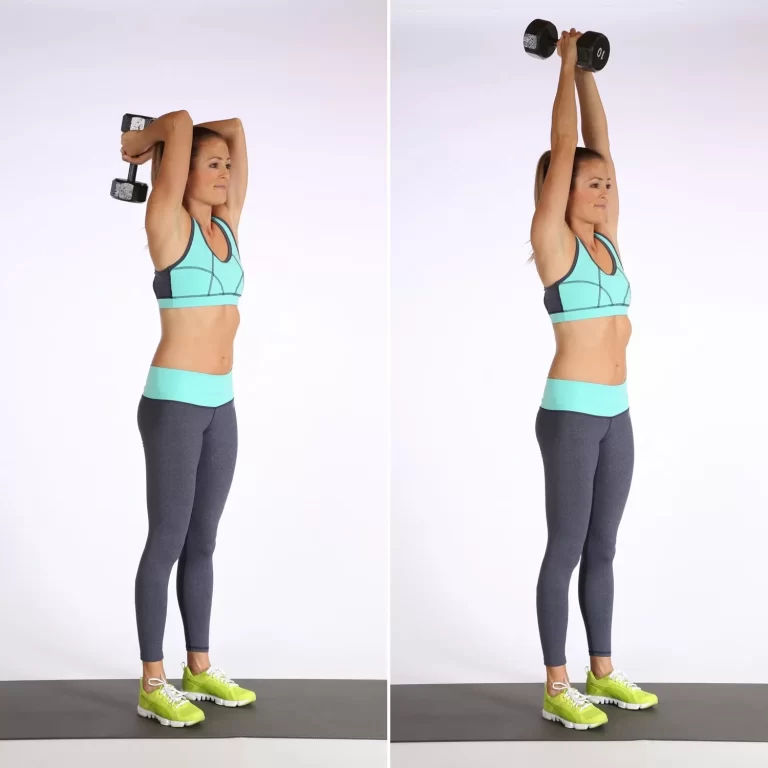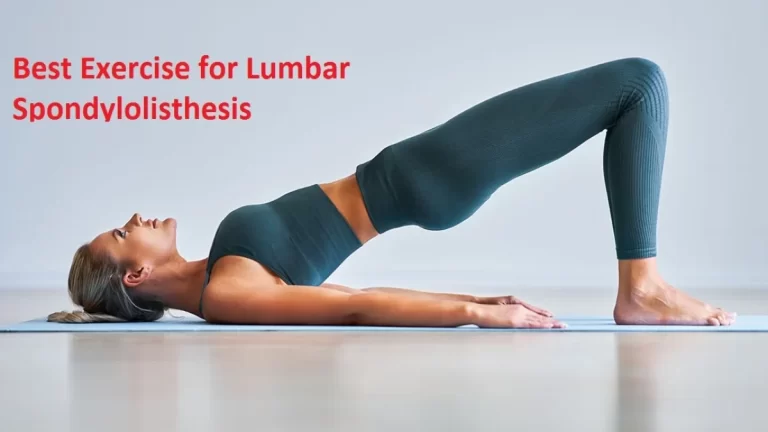14 Best Gluteus Minimus Exercises
The Gluteus minimus is the smaller of the three gluteal muscles and is located deep within the gluteus medius. In function, anatomy, nerve supply, and blood supply, the gluteus minimus is comparable to the gluteus medius.
The gluteus minimus is a tiny muscle deep in the buttocks in charge of hip abduction (moving the leg outward from the midline) and external rotation. Tight glutes can cause pain and discomfort, therefore stretching them regularly is essential. While it is not a huge muscle, it’s critical for maintaining your hips healthy and powerful.
Tight glutes can cause pain and discomfort, therefore stretching them regularly is essential. While it is not a huge muscle, it’s critical for maintaining your hips healthy and powerful. This article includes several gluteus minimus stretching and strengthening exercises.
What is the Gluteus Minimus Muscle?
The gluteus minimus muscle is a small, somewhat thick muscle positioned deep in the buttock, immediately below and medial to the bigger gluteus medius.
It is essential for hip abduction, internal rotation, and forward leg movement at the hip joint. During a single-leg stance, the gluteus minimus also helps stabilize the pelvis, limiting excessive hip drop on that side. This stabilizing function is essential while walking or running, carrying large things, or doing intense workouts like jumping.
Keep your legs aligned with your torso for maximum glute activation when conducting daily tasks or targeting your glutes during exercise.
The Gluteus Minimus Muscle: Anatomy and its Function
Origin
- The exterior surface of the ilium is between the anterior and inferior gluteal lines.
Insertion
- The Gluteus minimus muscle is fan-shaped and attaches to the anterolateral aspect of the greater trochanter of the femur.
Nerve Supply
- Superior gluteal nerve (L4, L5, S1)
Blood Supply
- A deep branch of the superior gluteal artery supplies it.
Function
- Its primary function is hip abduction.
- It stabilizes the pelvis during single-limb support in gait by activating on the supported side to prevent the pelvis from falling on the opposite swing side.
- Its anterior portion rotates the thigh medially.
Clinical relevance
Trendelenburg gait is caused by gluteus minimus weakness, in which the pelvis descends on the unsupported side. The lateral step-down test evaluates movement quality in the lower kinetic chain.
Greater Trochanteric Pain Syndrome (GTPS) is frequently caused by Gluteus minimus tendinopathy.
Trigger sites in the Gluteus minimus: The Glut Minimus is a multipennate muscle with multiple anterior, middle, and posterior trigger points that refer to strong pain in the lumbar spine and end at the ankle, following a similar pain pathway to the sciatic nerve but without the neurological symptoms such as weakness and numbness.
What is Trendelenburg Gait?
The Trendelenburg sign is used to measure hip abductor strength (gluteus medius and gluteus minimus). It is accomplished by instructing the patient to perform single-limb support on the tested leg while viewing the patient from behind to assess pelvic alignment. Hip abductor weakness is indicated by the pelvis dropping or deviating from the midline.
Why Should You Stretch Your Gluteus Minimus?
Stretching the gluteus minimus can help you relieve muscular stress and stiffness, reduce low back discomfort and hip tightness, promote flexibility and range of motion, and lower your risk of injury.
Tight glutes can be caused by a variety of circumstances, including injury, bad posture, a lack of sufficient warmups, muscular imbalance, or poor exercise technique. You may also experience tightness in your glutes if you overexert these muscles during a workout or participate in a sport.
Here are some examples of glute Minimus muscle stretching exercises:
Knee to Chest Pose (Standing)
Standing Knee Chest, also known as Tadasana Pavanmuktasana is a basic balancing position with several advantages.

- Here’s how to perform it:
- Place your feet hip-width apart and stand tall. Extend your spine and contract your core.
- Bend your right knee and bring your foot up to your sternum. Depending on your flexibility, you can hug your shin or your knee.
- Maintain the position for 5-10 breaths. Concentrate on your balance and take deep breaths.
- Rep on the opposite side.
Seated Figure Four Stretch
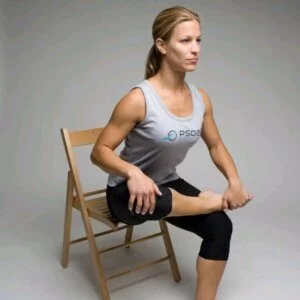
The Seated Figure Four position is performed as follows:
- Sit straight on the floor, your legs spread out in front of you.
- Place your right foot flat on the ground, directly inside your left leg, and bend your right knee. The outside of your right ankle should lay on the inside of your left thigh.
- Put your left hand on the floor behind you for support, then extend your right arm straight up to the ceiling.
- Maintain a straight spine by leaning forward from your hips. For added support, lay your elbows on the floor in front of you.
- Focus on your breath and the stretch in your hips while you hold the position for 5-10 breaths.
- Rep on the opposite side.
Supine Figure Four Stretch
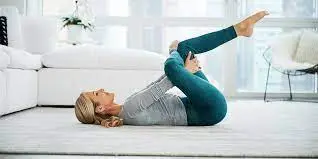
- Lie on your back with your knees bent and your feet flat on the floor to stretch.
- Just above your knee, cross your right ankle across your left leg.
- Clasp your hands behind your left leg and slowly draw it towards your chest until your right gluteus minimus stretches.
- Maintain for 20-30 seconds before repeating on the opposing side.
Pigeon pose
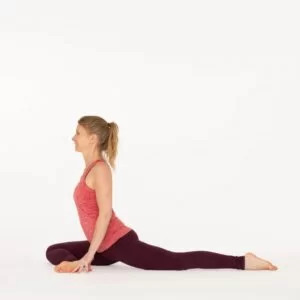
- Initiate by reaching down on your hands and knees.
- Keep your left leg straight behind you and slide your right knee forward towards your right hand.
- Lower your hips as far as you can comfortably go while maintaining a straight spine.
- Your right gluteus minimus and hip flexor should feel stretched.
- Preserve for 20-30 seconds before repeating on the other side.
Seated Spinal Twist
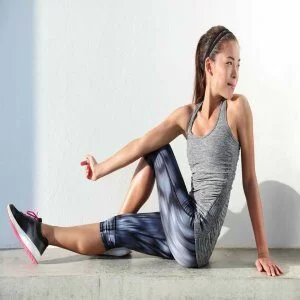
- The Seated Spinal Twist, is a posture that improves digestion and circulation while stretching the spine, hips, and shoulders.
- The Seated Spinal Twist is performed as follows:
- Sit on the floor, your legs outstretched in front of you.
- With your right foot on the floor, outside of your left thigh, bend your right knee. Your left knee should be pointed up at the ceiling.
- To provide support, place your left hand on the floor behind you.
- Turn your torso to the right and twist from the base of your spine.
- Depending on your flexibility, place your right hand on your left thigh or the floor outside your left hip.
- Hold the posture for 5-10 breaths, concentrating on your breath and spine twist.
- Rep on the opposite side.
Frog Pose
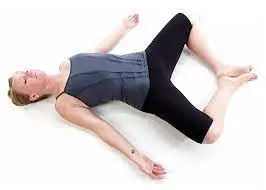
- Lie on your stomach with your knees bent and your feet hip-width apart on the floor.
- Keep your feet level on the floor and open your knees as wide as you can comfortably.
- Place your brow on the floor and your arms at your sides.
- Hold the position for 20-30 seconds.
Supine knee to the opposite shoulder
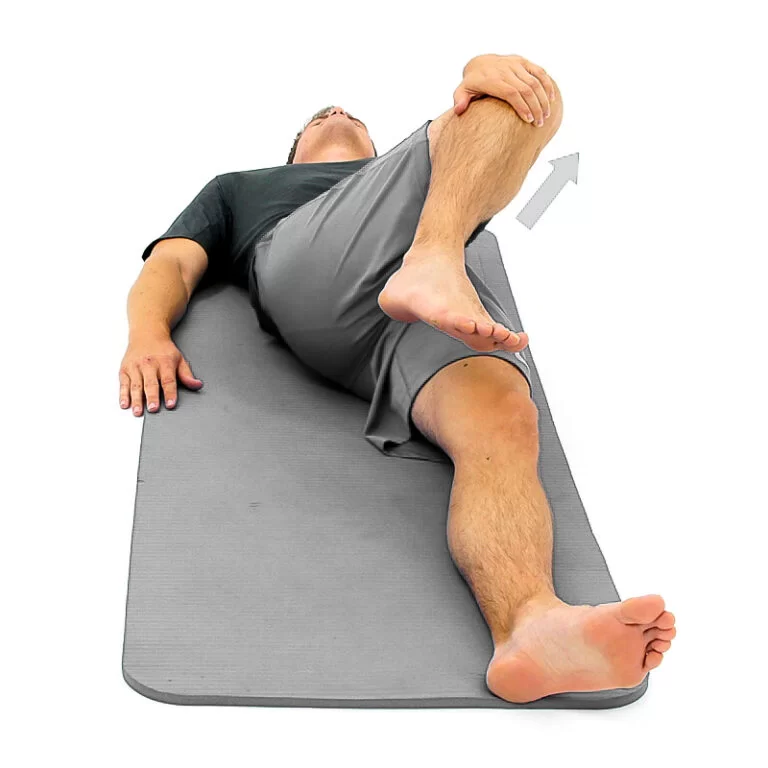
- lying down on your back, bend your knees, and set your feet flat on the base.
- Cross your right ankle slightly above your knee over your left knee.
- Pull your left leg up to your chest until you feel a stretch in your right gluteus minimus and piriformis.
- Preserve for 20-30 seconds before repeating on the other side.
Downward-Facing Dog:
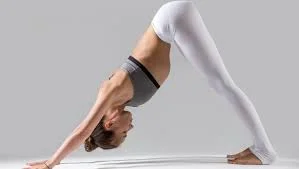
- Initiate on your hands and knees, shoulder-width apart, and knees hip-width apart.
- In a downward-facing dog pose, push your hips back and up.
- Maintain a straight back and your heels flat on the floor, or as near to it as you can comfortably get them.
- Maintain for 30-60 seconds.
Butterfly Bliss Strech
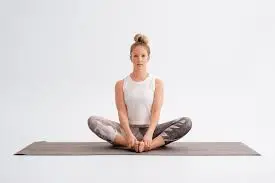
This is how the Butterfly Bliss Stretch is performed:
- Settle in with your knees bent and your feet flat on the ground. Picture yourself perched atop a tiny ball.
- As you gently lower your knees to the floor, allow your feet to spread out like a butterfly’s wings. Don’t push your knees to the floor if they are uncomfortable. Just keep moving as painlessly as you can.
- Breathe deeply and hold the stretch for 30 to 60 seconds while letting your hips and inner thighs loose. To increase the depth of the stretch, you can lightly bounce your knees up and down a few times.
- Return your knees to your starting position carefully to release the stretch.
Additional Tips to Perform Gluteus Minimus Stretching Exercises
- Take it easy: Make no effort to stretch.
- Deep breathing will help you relax and attain a deeper stretch.
- Each stretch should be held for 20-30 seconds. Each stretch should be repeated 2-3 times.
- Extend both sides evenly: Even if one side is tighter than the other, it is critical to extend both sides equally.
- Warm up before stretching to help avoid injury. Warm up by doing some easy exercises like jogging or jumping jacks.
- Listen to your body: if you feel any pain, stop stretching right away.
Gluteus Minimus Strengthening Exercises
Single-leg Bridge
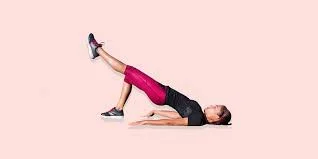
- lying down on your back with your knees flexed and your feet flat on the base.
- Extend your right leg towards the ceiling, lifting it off the ground.
- Lift your hips off the ground and press your left heel into the floor until your body forms a straight line from your shoulders to your knees.
- Hold for a second
- Then gradually lower your hips to the beginning position.
- Repeat on each side 10-12 times.
Clamshells
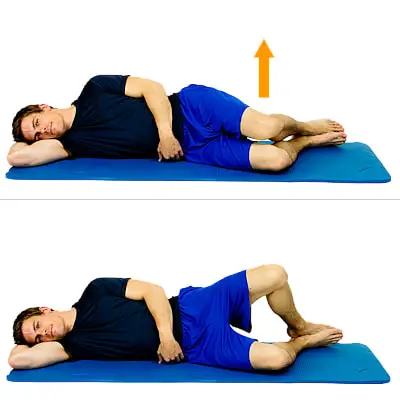
- Lie on your side, knees bent and placed on top of one another.
- Maintain a modest distance between your feet and your hips.
- Open your upper knee slowly away from your body while maintaining your feet together.
- Hold for a second before slowly lowering your knee to the beginning position.
- Repeat on each side 10-12 times.
Lateral band walks
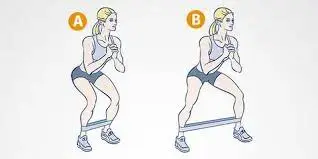
- Lateral band walks are performed by wrapping a resistance band around your ankles immediately above your feet.
- Take a short step to the side while standing with your feet hip-width apart.
- Maintain a straight opposite leg with your toes pointed forward.
- Lower your hips gradually until you feel a stretch in your glutes, then push off the ground and return to your starting position.
- Repeat steps 10-12 on either side.
Hip abduction on the side
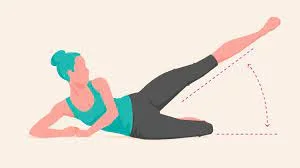
- lying down on your side with your legs flexed and piled on top of each other.
- Maintain a modest distance between your feet and your hips.
- Lift your top hip slowly off the ground, keeping your feet together.
- Hold for a second before slowly lowering your hip to the beginning position.
- Repeat on each side 10-12 times.
- Exercise for side-lying hip abduction
Curtsy lunges
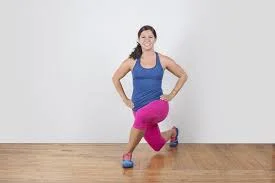
- Curtsy lunges are performed by standing with your feet hip-width apart and your toes pointing forward.
- Take a huge step back, crossing your right leg behind your left.
- Reduce your hips until your knees are at 90-degree angles.
- back to the beginning position by pushing off the base.
- Repeat on each side 10-12 times.
- Curtsy lunges are a type of workout.
Single-Leg Deadlift
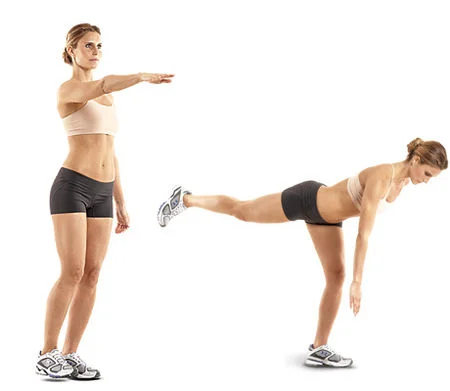
- Place one shoulder width apart in front of the other.
- Incline forward from your hips, holding your back straight and your core engaged.
- Lift the back of your leg off the ground and reach your arms down to the ground.
- At the bottom of the exercise, squeeze your gluteus minimus and wait before returning to standing.
- Rep on the opposite side.
- The target for 10-12 repetitions on each side, divided into 2-3 sets.
Banded Hip Abduction

- Wrap a resistance band around each of your ankles.
- Step one foot out to the side, keeping the band taut, while standing with your feet hip-width apart.
- Lift your other hip off the ground, pressing your gluteus minimus at the top, and shift your weight onto the standing leg.
- Lower back down slowly and repeat on the opposite side.
- Go for 10-15 repetitions on each side, divided into 2-3 sets.
Additional Tips to Perform Gluteus Minimus Stretching Exercises
- Begin slowly and progressively increase your workout intensity and length. If you try to do too much too quickly, you run the danger of hurting yourself.
- Warm up and cool down before and after each session. This will assist in the avoidance of injuries.
- Maintain appropriate form. It is more vital to do an exercise correctly with fewer weights than it is to perform the activity badly with greater weights.
- Breathe normally. Exhale at each exercise’s intensity phase and inhale during the rest period.
- Don’t get your hopes up. This can boost your blood pressure and put you in danger of damage.
- Pay attention to your body. Stop exercising if you have pain.
- Rest as necessary. Don’t overwork yourself.
- Keep hydrated. Before, during, and after your workout, drink lots of water.
- Maintain a nutritious diet. To grow and repair muscle, your body needs the proper nutrition.
- Find a workout partner. Working out with someone might help you stay motivated.
- Make strength exercise a regular element of your program. Aim to perform strength training activities at least twice a week.
Safety Advice
- Before practicing glute stretches, check with your doctor or another licensed fitness practitioner. Consult your doctor or physical therapist if you have any of the following symptoms in your hips, legs, or back:
- Surgery
- Injuries
- Pai
- Furthermore, if you’ve never done glute workouts or stretching in general, proceed with caution. Initially, hold each stretch for 20 to 30 seconds.
FAQs
What occurs when the gluteus minimus muscle is weak?
A gluteus minimus weakness causes a Trendelenburg gait, in which the pelvis descends on the unsupported side.
Why is it known as the gluteus minimus?
The gluteus minimus is the deepest and smallest of the three gluteal muscles. Its deep surface is connected to the ilium, but the gluteus medius muscle covers it superficially. That’s why it is called gluteus minimus.
What causes gluteus minimus tightness?
The gluteus medius and minimus muscles are no exception in the hips and buttocks. When these muscles are overused, they tighten and contract constantly to execute their function, much like a student who stays awake all night to prepare for an exam.
What is the purpose of the gluteus minimus?
Their primary function is femur abduction, however, internal rotation and flexion can occur depending on femur position. The gluteus minimus also internally rotates the thigh when the hip is flexed. The gluteus minimus externally rotates the thigh when the hip is stretched.
What are the advantages of having a strong gluteus minimus?
Strong glutes and hamstrings can aid with posture, lower back, hip, and knee discomfort, athletic performance, bone density loss, and even getting rid of that pesky belly pooch.
References
- Gluteus minimus. (n.d.). Physiopedia. https://www.physio-pedia.com/Gluteus_Minimus
- Travers, C. (2023, September 6). The anatomy of the gluteus minimus. Verywell Health. https://www.verywellhealth.com/gluteus-minimus-anatomy-4690998
- Nora. (2023, January 10). 10 best gluteus minimus exercises. Stretch.com. https://stretch.com/blog/10-best-gluteus-minimus-exercises/
- Massages, P. (2023, May 24). 5 Stretches for the gluteus medius and minimus – Phila Massages. Phila Massages. https://philamassages.com/stretching/4-stretches-for-the-gluteus-medius-and-minimus/

